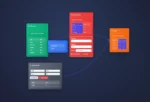Imagine transforming an overwhelming sea of data into actionable insights right where it’s generated. Traditionally, data has journeyed long distances—from user devices to centralized data warehousing—for analysis. However, edge computing paired with powerful visualization tools is reshaping this landscape, empowering businesses to glean real-time insights directly at the network edge. Decision-makers equipped with immediate insights can proactively address emerging opportunities and threats, enhancing agility and performance. So, how exactly does data visualization at the network edge unlock these opportunities, and what should businesses consider when implementing edge visualization solutions? Let’s explore how your organization can drive innovation, analytics sophistication, and strategic value by visualizing data more intelligently with edge computing.
What Exactly is Edge Computing and Why Should You Care?
Edge computing is rapidly evolving from a promising idea into a strategic asset for businesses across industries. Simply put, it brings computation and data storage closer to the location where it’s being generated—the “edge” of the network. Whether it’s data collected from IoT devices, manufacturing sensors, mobile apps, or real-time analytics, processing this information on-site or in close proximity significantly minimizes latency, pushes network efficiencies, and accelerates actionable insights.
Traditional data warehousing solutions like those covered in our guide on transitioning from Excel to data warehousing, usually involve centralized architectures, which can introduce delays due to bandwidth constraints, limited processing speeds, or network bottlenecks. Edge computing alleviates these pain points, especially critical for time-sensitive data processing tasks and performance-sensitive visualizations. Real-time data visualizations generated at the edge provide instant awareness, allowing businesses to act decisively even in resource-constrained or remote environments.
The power of edge computing combined with advanced visualization capabilities significantly enhances your organization’s competitive advantage. Early adopters are already gaining benefits such as improved operational responsiveness, reduced infrastructure costs, and unparalleled flexibility when it comes to analyzing data streams. Whether you’re overseeing a fleet of autonomous vehicles, running a factory floor, or managing a network of mobile devices, understanding and adapting to events and insights as they happen will put you ahead of the competition.
The Strategic Advantage of Data Visualization at the Network Edge
Data visualization at the edge unlocks unique strategic insights for decision-makers. Businesses today depend heavily on the timeliness of their data to remain competitive, agile, and responsive in complex market environments. When visualization is embedded at the network edge, businesses dramatically shrink the time between data generation, analysis, and decision-making.
Consider how businesses are increasingly looking to improve user experiences. For example, retailers can utilize analytics and data engineering to enhance customer experiences significantly. Now, by applying those same principles to edge data visualization, organizations can immediately understand user behavior patterns as they occur, enabling rapid personalization and heightened customer engagement. Reception of timely alerts and visual cues helps decision-makers respond proactively, maximizing business impact and customer satisfaction.
Furthermore, edge visualization empowers businesses to adopt proactive governance practices. Whether your focus is on safeguarding consumer privacy, complying with industry regulations, or building a responsible AI governance framework, edge data visualization enhances your ability to perform near-instantaneous compliance checks and rapidly detect unusual activity. By providing an immediate visual representation of potential threats, anomalies, and patterns, stakeholders can react decisively, fostering robust governance and accountability practices at every operational stage.
Use Cases that Showcase Edge Data Visualization in Action
The versatility of edge computing visualization is being enthusiastically embraced by organizations across multiple sectors. For instance, oil and gas companies are deploying IoT sensor networks across remote drilling and extraction sites, capturing enormous volumes of data about equipment performance and potential operational hazards. Edge visualization allows engineers and operators to identify and resolve issues immediately, safeguarding productivity, safety, and environmental compliance without delays or costly manual intervention.
Similarly, municipal urban infrastructure management projects benefit significantly from edge analytics. Smart traffic management uses instantaneous data visualization right at intersections and key transport nodes, addressing road congestion, traffic trends, and environmental impact reduction dynamically and proactively.
Leveraging edge visualization also streamlines data transformations and storage management. By incorporating best practices like just-in-time data transformation at the edge, businesses effectively mitigate costs, avoid storage overloads, and simplify their broader data infrastructure. Furthermore, efficient visualization and data transformation at the edge complement complex scenarios, like processing hierarchical structured data across distributed assets, either in industrial IoT ecosystems or data-heavy networking applications, allowing business leaders to rapidly interpret visualized hierarchical insights on-site and without waiting for central computations.
Architectural Considerations for Implementing Edge Data Visualization
Implementing visualization at the network edge requires strategic adoption of modern architectures. First, businesses need to decide precisely which data needs immediate visualization at the edge and which can be aggregated, summarized, or archived for later central analysis or archival storage.
Tools and solutions range widely from custom-built solutions leveraging edge servers and open-source platforms, such as Kubernetes, Node.js servers—like those shown in our guide on how to send Twitter data to BigQuery using Node.js—to fully managed analytics platforms that support federated analytics. Investing in robust platforms, for instance leveraging cloud data warehouse technologies such as Amazon Redshift, enhances your organization’s capability to blend real-time, edge-origin data into broader analytics strategies. Here, our expert services around Amazon Redshift consulting become strategically advantageous in crafting hybrid models for edge and centralized visual analytics.
Key factors like scalability, latency requirements, security, and compliance obligations must guide your architecture decisions. Adopting proven frameworks to achieve secure data flow is crucial. For instance, capturing data provenance supports compliance around data lineage, identifying precisely how data transformations occurred at edge and central systems—protecting integrity, providing audit trails, and ensuring ongoing adherence to governance principles and regulatory requirements.
Selecting the Right Edge Tools and Technology Partners for Your Business
Navigating edge computing data visualization successfully requires selecting the right set of tools, services, and implementation partners. Choosing reliable ETL tools or visual analytics platforms involves assessing criteria such as data processing speed, ease of deployment, visual interactivity, cloud integrations, and security features. Our detailed guide on how to select the right ETL tool for your business offers a solid framework for establishing these pivotal technology partnerships.
When selecting technologies, consider whether your chosen solution can seamlessly operate both at the edge and within centralized systems. Ensure each chosen visualization solution integrates securely with your existing IT ecosystem, accommodates future scalability, and meets your specific visualization requirements effectively. Evaluating approaches, flexibility, vendor reliability, and associated cost efficiencies is key for a smooth-edge implementation.
Collaborating with capable consulting partners also streamlines the path to successful edge visualization. Leveraging third-party expertise accelerates implementation, facilitates best-practice guidance, and provides valuable insights drawn from vast industry experience. Consultancy services can optimize your edge solution architecture, identify unnecessary complexities or inefficiencies early, and ensure your business realizes maximum benefits.
Final Thoughts on Visualizing Data Intelligence at the Network Edge
Edge computing combined with intuitive, flexible data visualization offers powerful opportunities for businesses ready to embrace decentralization, real-time adaptability, and smarter, faster insights at the network edge. Organizations cannot overlook the transformative potential of edge visualization—it accelerates decision-making, enhances responsiveness, boosts operational efficiency, and delivers competitive advantage.
If you are looking to innovate your analytics strategy, embrace agility, and make smarter decisions rapidly, deploying visualization technologies at the edge ensures opportunities and challenges are promptly and effectively seen, understood, and acted upon. Equip your stakeholders with insights precisely where—and precisely when—they matter most, turning complex real-time data streams into valuable strategic resources for sustainable growth and continuous innovation.
Thank you for your support, follow DEV3LOPCOM, LLC on LinkedIn and YouTube.

























